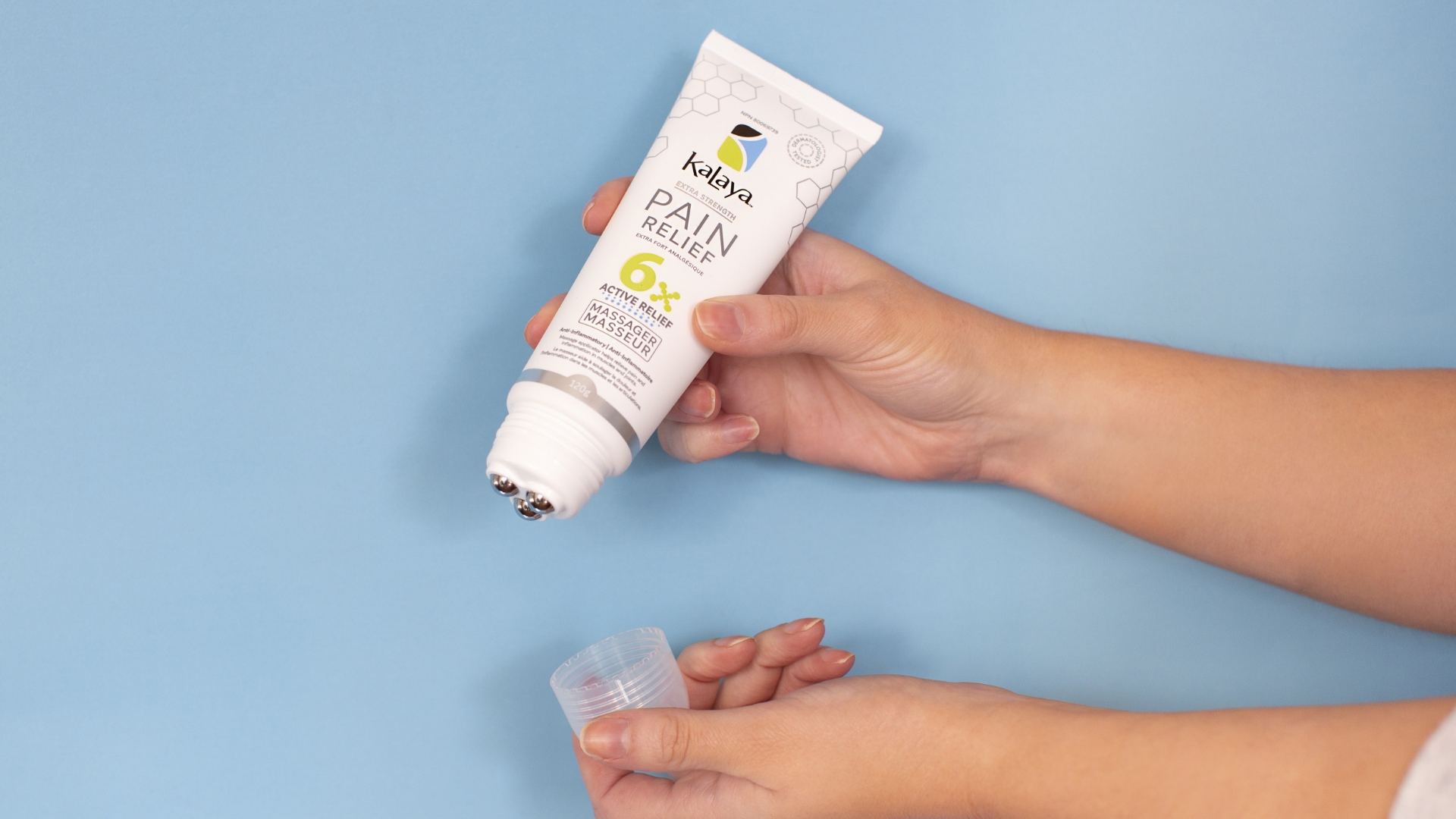
Observational Study on the Onset of Pain Relief After a Single Application of the Kalaya 6X Extra Strength Pain Relief
Pain
Pain is a major health problem that substantially reduces quality of life. Pain has been viewed as a sensation and a perception that is defined by the International Association for the Study of Pain (IASP) as an unpleasant sensory and emotional experience associated with actual or potential tissue damage, or described in terms of such damage.1
Pain is a complex process involving interactions between peripheral and central nervous system pathways and many features are not fully explored. There are many ways to categorize pain 2,3 according to its duration, location and presentation. Acute pain is considered adaptive, in that it has a warning function. It is of short duration (generally up to a few weeks) and declines with the healing of the underlying injury or disease. Pain that persists beyond the expected healing period may lead to a transition into chronic pain through various complex mechanisms. Pragmatically, persistent or recurrent pain lasting longer than 3 months can be regarded as chronic pain.3 Chronic pain is generally regarded as maladaptive and is frequently associated with anxiety, depression, sleep disturbances, fatigue and may have an impact on physical and social functioning.
Classifying Pain
Pain can be classified as either nociceptive or neuropathic although in practice this distinction is not always applicable as patients may feature mixed pain including both nociceptive and neuropathic pain characteristics.4,5 Nociceptive pain arises from actual or threatened damage to non-neural tissue and is due to the activation of nociceptors.1 It can either be of somatic or visceral origin. Activation of nociceptors in tissues such as bone, joints, muscle or skin by mechanical, thermal or chemical insults leads to somatic pain. Superficial somatic pain is sharp and clearly localized (e.g. cuts) while somatic pain arising from deeper structures is dull and poorly localized (e.g. musculoskeletal injuries).
Measuring Pain
Pain intensity may be described as mild, moderate or severe. As pain is always subjective, self-assessment pain intensity scales provide the most valid measure of the experience. There are no validated objective measures. Among the pain rating scales the visual analogue scale (VAS) and the numeric rating scale (NRS) have been extensively used and validated.6 The VAS is a continuous variable on a 10cm line representing “no pain” to “worst imaginable pain”. The NRS describes pain level with numbers from 0 to 10, where 0 represents “no pain” and 10 means “worst imaginable pain”. The NRS is more practical for use in the clinical environment.
Treatment
The most common method to treat pain is oral analgesic medications, however the treatment of pain has always been a challenge using these medications. Oral analgesic medicals tend to have delayed onset of action and not all patients respond sufficiently to the dosage taken. Additionally, the cost of oral analgesic medications may be high and the side effect of taking these medications can always be a concern. Topical pain relief products are considered safer and more cost-effective alternative for pain treatment. The objective of this study was to examine the effectiveness of a topical pain relief cream, Kalaya 6X Extra Strength Pain Relief, after one-time application.
Materials and Methods
Kalaya 6X Extra Strength Pain Relief (K6XPR) is a registered natural health product with Health Canada. It contains six medicinal ingredients which are methyl salicylate (11% wt.), arnical montana flower extract (5% wt.), menthol (4% wt.), camphor (4% wt.), methyl sulfonyl methane (1.5% wt.) and eucalpytus globulus leaf oil (0.5% wt).
The clinical study was conducted at Beechwood Clinic in Waterloo, ON through November to February 2019. 48 volunteers including 25 female and 23 male, aged from 13 to 95 years old participated in this study. These patients had acute and/or chronic medical conditions including arthritis, tendonitis, fasciitis, joint pain, tension headaches, neuropathic (neuritis), post-surgery and post-fracture pains, and bursitis. Volunteers were asked to evaluate the onset time of the experience of pain relief after application of K6XPR. They were also asked to score the level of pain they experienced before and after using K6XPR on a ten-point scale.
Results and Discussion
All volunteers felt improvement in pain or were free of pain within three minutes of application of K6XPR, where 51.9% felt pain relief within one minute. The average reduction in pain is 5-point on a 1-10 point pain score. Results indicate that K6XPR is an effective and efficient topical pain treatment for a variety of acute and chronic pain conditions.
References
- Loeser J.D. Treede R-D. The Kyoto protocol of IASP basic pain terminology: topical review: Pain 137 (2008), 473-7
- Doleys DM. Pain: Dynamics and Complexities. Oxford University Press INC 2014, ISBN 978-0- 19-933153-6
- Treede R.D., Rief W., Barke A., Aziz Q., Bennett M.I., Benoliel R., Cohen M., Evers S., Finnerup N.B., First M.BN., Giamberardino M.A., Kaasa S., Koset E., Lavanc’homme P., Nicolas M., Perrot S., Scholz J., Schug s., Smith B.H., Svensson P., Vlaeyen J.w., Wange S.J. A classification of chronic pain for ICD-11. Pain 156, 2015: 1003-1007
- Gerbershagen H.J. Transition from acute to chronic postsurgical pain. Physiology, risk factors and prevention. Schmerz, 2013; 27: 81-95
- WHO scoping document 2012
- Koltzenburg M, McMahon S, Tracey I, Turk DC (ed.) Wall and Melzack’s Textbook of Pain. 6th edition, Saunders, imprint of Elsevier Ltd., ISBN 978-0-7020-4059-7

